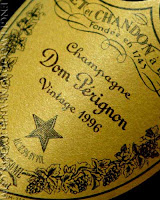There are 49 million bubbles in a 750ml bottle of champagne, give or take a few.
The pressure in a bottle of champagne is 90 pounds per square inch, about three times that in an automobile tire.
The shape of the champagne glass is important. The glasses you see people sipping Champagne
Legend has it that the champagne "coupe" was modeled in the shape of Marie Antoinette's breast, using wax moulds.
A champagne cork leaves the bottle at a velocity of approximately 38-40 mph, but can pop out at as fast as100 mph.
Although the answer to life, the universe and everything may be 42 . . . 45 is the magic number for champagne. Champagne Champagne
This is how to do it . . .
- Remove the foil from the cork.
- Untwist the wire restraint securing the cork.
- Wrap the bottle's neck and cork in a dish towel.
- Angle the bottle away from everyone.
- Take hold of the cork with the towel and gently untwist.
- Continue untwisting, or hold the cork in place and twist the bottle itself.
- Slowly ease the cork out of the bottle's neck.
- Siiiiiiiiiiiiiiiiigh
- Listen for the pop and pour.
Champagne corks are “straight” before they are put into the bottle. The “mushroom” shape is a result of the inserted portion of the cork being compressed in the bottle. Once pulled from the bottle the lower part of that portion of the stopper (the natural cork discs) continues to expand shaping itself into a “mushroom”.
___________________
A true mimosa is made of three parts champagne and two parts orange juice served in a proper champagne glass. For a little something special . . . as if champagne isn’t special enough . . . add a teaspoon Grand Marnier to make a Grand Mimosa. Mmmm, yummers!
Cheers! And Happy New Year!
"come quickly, I am tasting the stars!"
Dom Perignon






Tidak ada komentar:
Posting Komentar